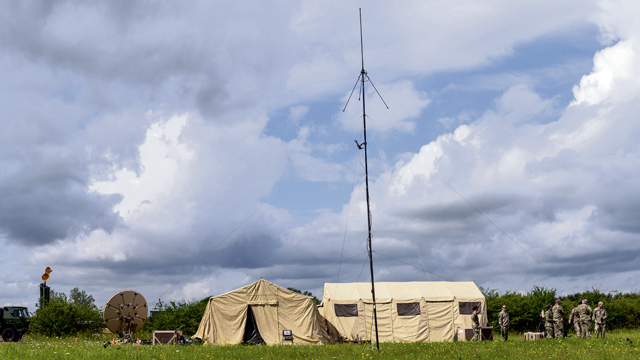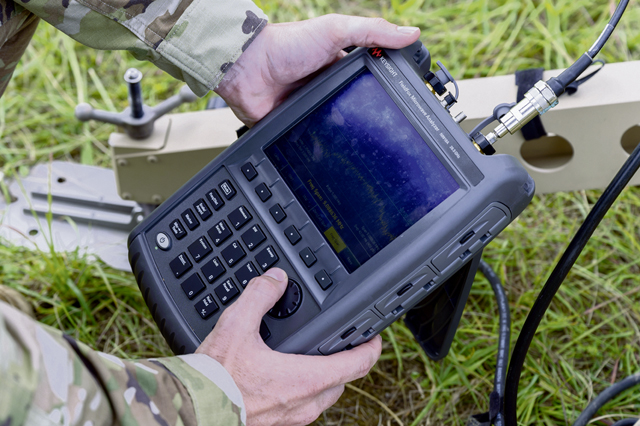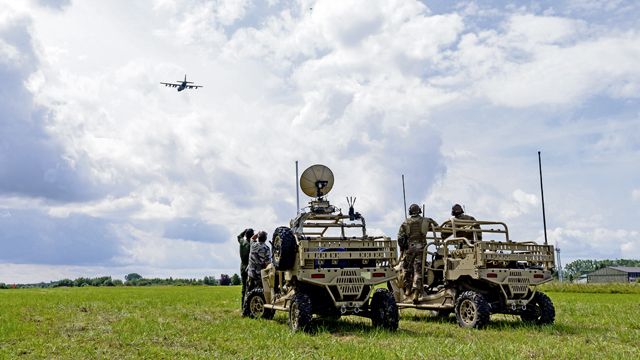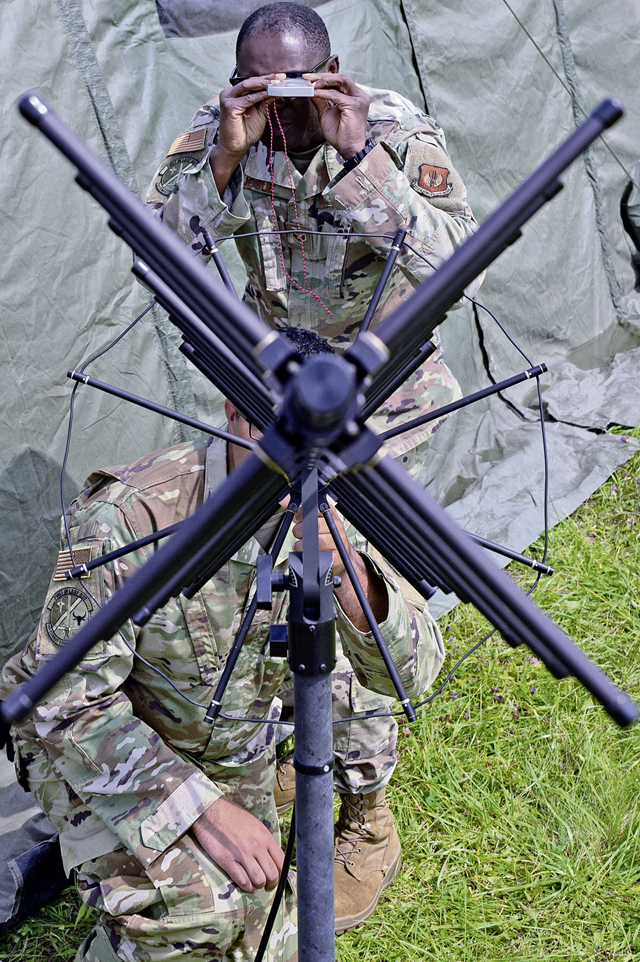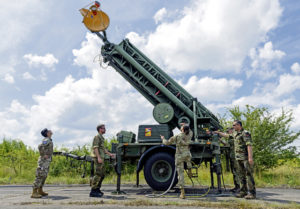
U.S. Air Force Airmen assigned to the 1st Combat Communications Squadron established and sustained communications in a simulated contested environment during exercise Heavy Rain II in Grostenquin, France, July 19-27.
While the joint exercise saw the 1st CBCS as the main players, it included personnel from U.S. Air Forces in Europe – Air Forces Africa A6 Spectrum Operations, the 24th Intelligence Squadron, the 1st Air and Space Communications Operations Squadron, the U.S. Joint Spectrum Center, the 352nd Special Operations Squadron, and French and German air force personnel from the Polygone — a multinational aircrew electronic warfare tactics facility.
“This exercise highlighted the importance of electromagnetic spectrum operations (EMSO) for the 1st CBCS,” said U.S. Space Force Sgt. Sergio Huerta, 1st CBCS electromagnetic spectrum operations supervisor. “It fulfilled the 435th Air and Space Communications Group’s intent to train Airmen to operate in contested and degraded environments, familiarize Airmen with EMSO and understand the steps to communicate operational impacts of electromagnetic interference (EMI).”
Heavy Rain II began with the 1st CBCS forward deploying a communications fly-away kit to exercise an agile combat employment dispersal event with site setup and rapid establishment of baseline communications. Shortly after, a flexible communications package team arrived, establishing further communications capabilities.
“The exercise was an excellent demonstration of how combat comm responds within contested and congested environments,” Huerta said. “As an exercise planner, it was crucial that Airmen learned the characteristics of EMI, how to mitigate or follow their primary, alternate, contingency and emergency communications plan, and their spectrum interference reporting procedures.”
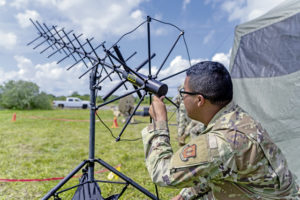
Throughout the exercise, combat communications Airmen practiced detecting and identifying various radio and cyber communications interferences generated by French and German air force counterparts, reporting the event, and resolving the issue to resume correspondence with aircrew and higher headquarters.
“It was a pleasure working with our partner nations and gathering their simulated opposition forces perspectives,” Huerta said. “This exercise also helped validate and test their equipment’s capabilities.”
Drop zone operations were conducted with an MC-130J Commando II aircraft assigned to the 67th Special Operations Squadron, Royal Air Force, Mildenhall. The exercise tested the skills of 1st CBCS landing and drop zone safety personnel, who had to overcome communications interference with aircrew to successfully coordinate airdrops.
“During the exercise, we deployed a portable Doppler radar to forecast weather, successfully accomplished our unit’s first drop zone operation and validated the Air Force’s only vehicle-mounted tactical air navigation system, which allows aircraft to safely locate landing zones in inclement weather,” said Staff Sgt. Sean Scott, 1st CBCS landing zone safety officer. “This has been a culmination of three years of training, research and product development.”
Subjecting combat communications personnel to a contested electromagnetic spectrum environment, Heavy Rain II gave Airmen the opportunity to validate and progress ACE capabilities, sharpen expeditionary mindsets and overcome communications interference to establish and secure mission-essential connections.
“For the last 30 years, combat communications personnel have been deploying almost nonstop, supporting operations and exercises all over the world,” said Lt. Col. Scott Metzler, 435th ACOMG deputy commander. “Our communications and cyber technicians proved during this exercise that although we still have much to learn, we can overcome the kinds of challenges we could face as we prepare for any conflict in a great power competition paradigm. We are extremely proud of our team and are excited about what comes next.”
